4 Easy-to-Make Bird Feeders Using Recycled Materials
Are you looking for a fun and eco-friendly project that not only beautifies your garden but also attracts delightful feathered friends? Well, you’re in luck! This article explores simple and creative ways to make bird feeders using materials you already have at home. Imagine transforming that empty plastic bottle or old tin can into a charming sanctuary for birds! Not only will you be giving these lovely creatures a place to feed, but you’ll also be doing your part for the environment by recycling and repurposing everyday items. Let’s dive into the world of DIY bird feeders and discover how easy and rewarding it can be!
Recycling materials for bird feeders is a fantastic way to contribute to environmental sustainability while sparking your creativity. Think about it: instead of tossing out items that could end up in a landfill, you can breathe new life into them! Using recycled materials helps reduce waste and conserves resources, making it a win-win situation for both you and Mother Nature. Plus, crafting your own bird feeders can be a delightful way to spend time with family or friends. You’ll not only have a sense of accomplishment but also a unique piece to showcase in your garden. So, why not let your imagination run wild and see what you can create?
When it comes to repurposing household items into bird feeders, the possibilities are endless! You might be surprised to find that many common materials can be transformed into functional and attractive feeders. Here are some popular options:
- Plastic Bottles: These versatile containers can easily be turned into feeders that hold seeds.
- Tin Cans: Sturdy and durable, old cans can be converted into charming feeders with a bit of creativity.
- Wooden Crates: Offering a rustic aesthetic, wooden crates provide ample space for feeding various bird species.
Each of these materials has its own unique charm and can be tailored to fit your garden's style. Let’s explore how to create feeders from plastic bottles and tin cans, and later, we’ll dive into the rustic appeal of wooden crates!
One of the easiest and most popular options for DIY bird feeders is the plastic bottle. Not only are they readily available, but they’re also incredibly versatile and simple to work with. With just a few steps, you can create a bird feeder that will attract a variety of birds to your yard. Imagine watching colorful finches and sparrows flock to your creation!
Before you start, gather the following materials:
- Empty plastic bottle (1-2 liter works best)
- Scissors or a craft knife
- Wooden dowel or stick (for perches)
- Birdseed
- String or wire (for hanging)
Now that you have your materials, follow these easy steps to assemble your plastic bottle bird feeder:
- Start by cleaning the plastic bottle thoroughly and removing any labels.
- Using scissors or a craft knife, cut a few holes in the bottle, just big enough for the birds to access the seeds.
- Insert a wooden dowel or stick through the holes to create a perch.
- Fill the bottle with birdseed, and securely attach the cap back on.
- Finally, use string or wire to hang your feeder from a tree branch or hook.
This simple yet effective design will surely attract a variety of birds, providing you with endless enjoyment as you watch them feed!
Old tin cans are another fantastic option for creating bird feeders. They’re sturdy and can withstand the elements, making them a reliable choice for your backyard. Plus, they add a charming, rustic touch to your garden decor. Let’s see how you can safely convert a tin can into a delightful bird feeder.
To make a tin can feeder, follow these steps:
- Start with a clean, empty tin can. Remove the label and any residue.
- Use a can opener to carefully remove the top of the can, ensuring there are no sharp edges.
- Pierce holes in the sides of the can to insert dowels for perches.
- Fill the can with birdseed.
- Attach a wire or string to the top of the can for hanging.
With a little creativity, you can paint or decorate the can to match your garden theme!
If you have old wooden crates lying around, they can be transformed into beautiful bird feeders that not only serve a purpose but also enhance your garden's aesthetic. Wooden crates provide ample space for feeding and can be customized to suit your style. Imagine a charming crate filled with seeds, attracting various bird species while adding a rustic touch to your outdoor space!
When it comes to designing your wooden crate feeder, the sky's the limit! Here are a few creative ideas to consider:
- Hanging Crates: Suspend crates from tree branches or hooks for a whimsical look.
- Stacked Crates: Stack multiple crates to create a multi-level feeding station.
- Painted Crates: Use non-toxic paint to add a pop of color that complements your garden.
Feel free to mix and match these ideas to create a unique feeder that reflects your personal style!
Keeping your bird feeders clean is crucial for the health of your feathered friends. Regular maintenance ensures that your recycled feeders remain safe and inviting. Here are some tips to keep in mind:
- Clean feeders regularly with warm soapy water to remove any mold or bacteria.
- Replace birdseed every few weeks to prevent spoilage.
- Inspect for any damage or wear and tear, and repair as needed.
By maintaining your feeders, you'll ensure that they remain a safe haven for birds to visit and enjoy!
Q: What types of birds will visit my feeders?
A: The types of birds that visit your feeders can vary based on your location and the types of seeds you offer. Common visitors include finches, sparrows, and chickadees, but you may also attract woodpeckers and blue jays!
Q: How can I keep squirrels away from my bird feeders?
A: To deter squirrels, consider using feeders designed with squirrel-proof features or place feeders on poles that are difficult for squirrels to climb. Additionally, you can use baffles to block their access.
Q: Can I use any type of seed in my homemade feeders?
A: While you can use a variety of seeds, sunflower seeds, millet, and nyjer seeds are popular choices that attract many birds. Just be sure to avoid using seeds that are harmful to birds.
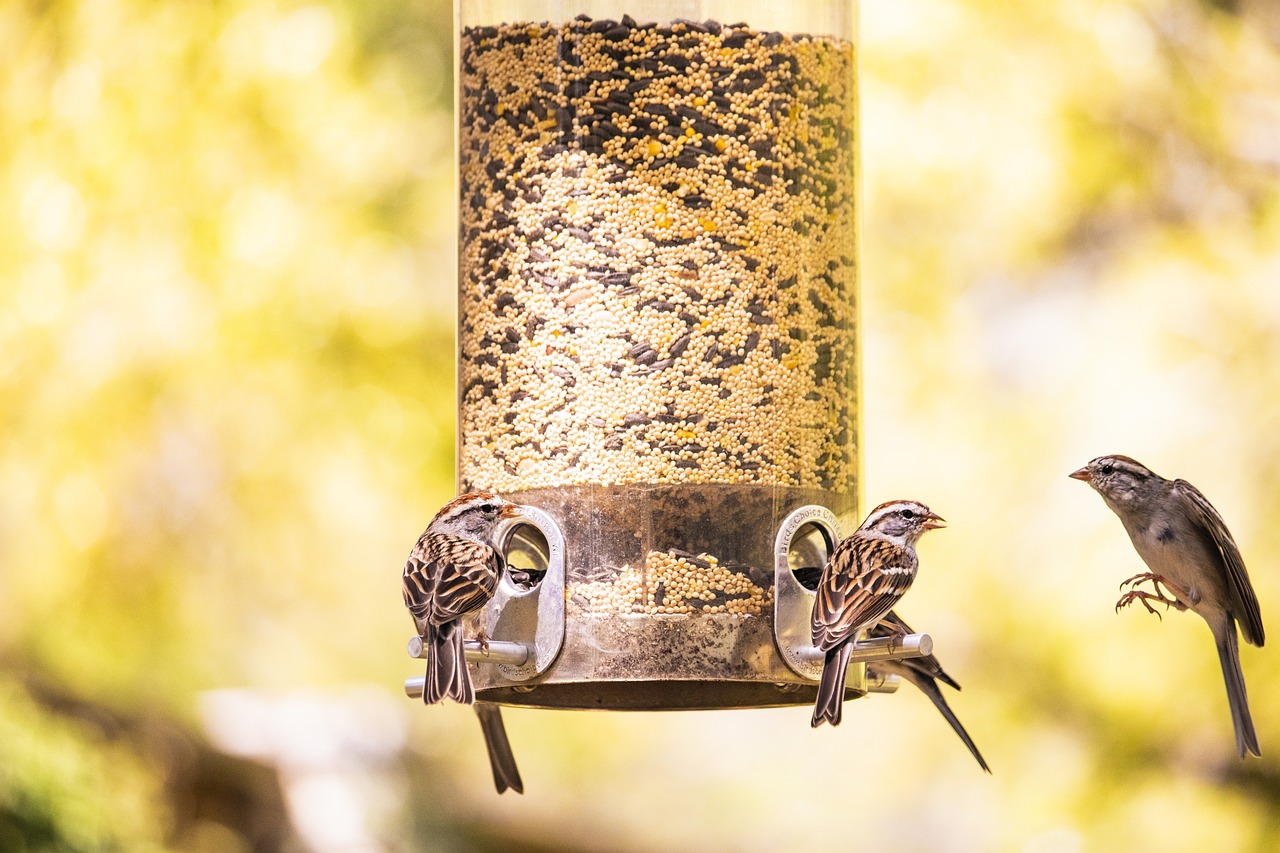
Why Use Recycled Materials?
Using recycled materials for creating bird feeders is a fantastic way to benefit both the environment and your creativity. When you think about it, we live in a world overflowing with waste, and finding innovative ways to repurpose everyday items can make a significant impact. Not only does recycling help reduce landfill waste, but it also fosters a sense of resourcefulness and ingenuity. Imagine transforming that old plastic bottle or tin can into a vibrant feeder that attracts a variety of birds to your backyard—it's like giving new life to something that would otherwise be discarded!
Moreover, crafting bird feeders from recycled materials can be a fun and engaging activity for the whole family. It’s an opportunity to get your kids involved in nature and teach them about the importance of sustainability. You can spend quality time together, discussing the different types of birds that might visit your feeder, while also instilling values of environmental consciousness. After all, isn't it satisfying to know that your creativity is helping to nourish our feathered friends while simultaneously protecting the planet?
Additionally, using recycled materials often means that the costs associated with crafting these feeders are minimal. Why spend a fortune on store-bought feeders when you can create something unique and functional for free? Think of all the potential items you can use:
- Plastic bottles
- Tin cans
- Old wooden crates
- Cardboard boxes
- Egg cartons
In summary, using recycled materials for bird feeders is a win-win situation. You’re not just making a feeder; you’re making a statement about sustainability, creativity, and community involvement. So, gather those materials around your home, roll up your sleeves, and let’s get crafting! Your backyard birds will thank you for it!
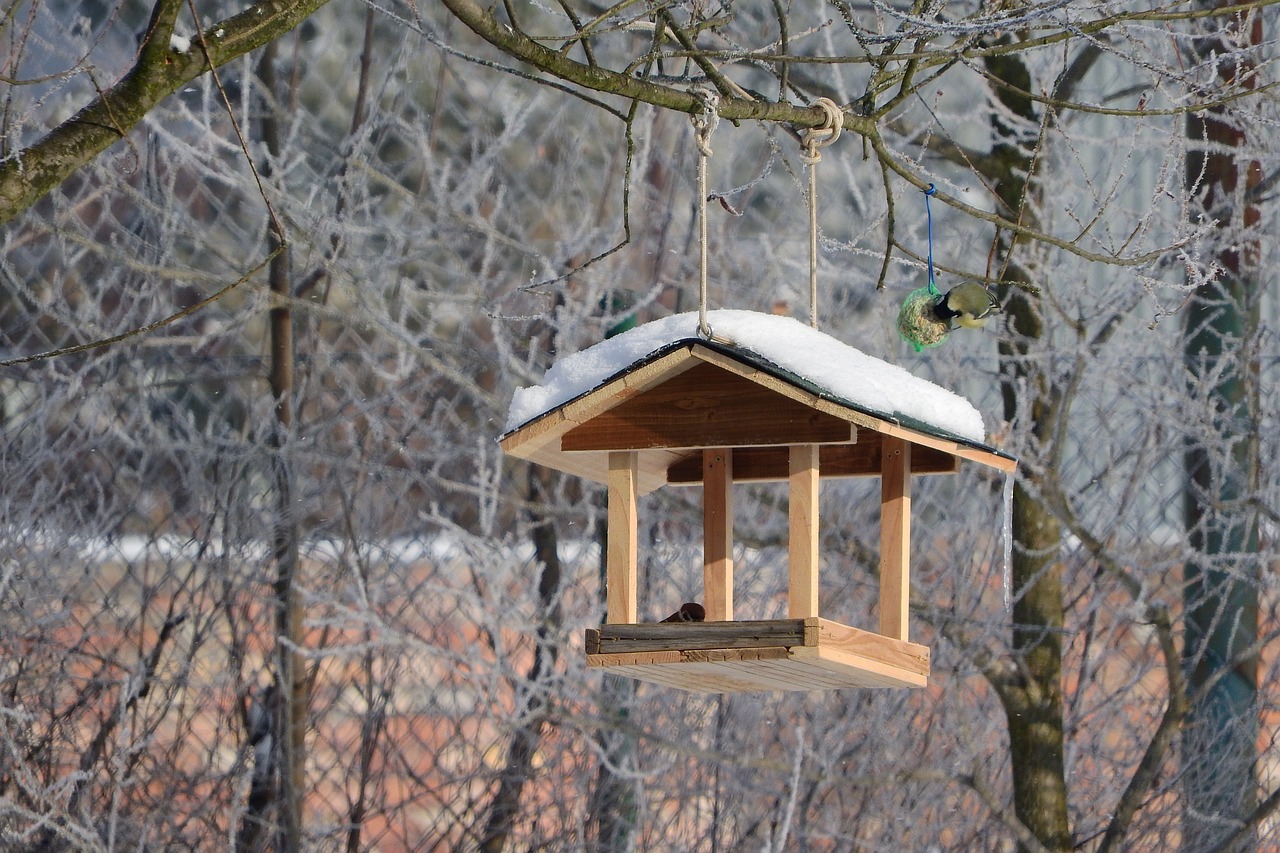
Types of Recycled Materials
When it comes to creating bird feeders, the possibilities are virtually endless, especially when we look around our homes for recycled materials. Not only does this approach help reduce waste, but it also sparks creativity and resourcefulness. So, what types of materials can you use? Well, let’s dive into some common household items that can be transformed into delightful bird feeders.
One of the most popular choices is the humble plastic bottle. These lightweight and durable containers can be easily manipulated to create functional feeders that can hold seeds and attract various bird species. Imagine turning a simple two-liter soda bottle into a vibrant feeder that brings life to your garden! You can cut openings in the sides, fill it with seeds, and hang it from a tree branch. It’s like giving a second life to something that would otherwise end up in the trash.
Another fantastic option is the classic tin can. Often overlooked, these sturdy containers can be painted and decorated to create charming feeders. Just think about it: a rustic tin can, adorned with colorful paint, hanging in your yard—what a sight that would be! Plus, tin cans are readily available and can withstand various weather conditions, making them a durable choice for outdoor use.
Then there are old wooden crates. These beauties not only add a touch of rustic charm to your garden but also provide ample space for feeding. You can stack them or arrange them creatively to form a multi-level feeder. The natural wood blends beautifully with the outdoors, and birds will feel right at home. Just imagine a cozy little spot where feathered friends can gather and feast!
In addition to these, you can also consider using items like old teacups, muffin tins, and even cardboard boxes as unique feeder options. The key is to think outside the box and recognize the potential in everyday items. Who would have thought that a discarded teacup could become a whimsical bird feeder? It’s all about using your imagination and having fun with the process!
In summary, the types of recycled materials you can use for bird feeders are diverse and easily accessible. From plastic bottles to tin cans and wooden crates, each item presents a unique opportunity to create something beautiful and functional. So, gather those materials, unleash your creativity, and watch as your backyard transforms into a bird paradise!
Q: What types of birds are attracted to homemade feeders?
A: Many birds are attracted to homemade feeders, including finches, sparrows, chickadees, and even woodpeckers, depending on the type of food you offer.
Q: How can I ensure my bird feeders are safe for birds?
A: Make sure to clean your feeders regularly to prevent mold and bacteria. Additionally, avoid using materials that could be harmful to birds, such as sharp edges or toxic paints.
Q: What food should I put in my recycled bird feeders?
A: You can use a variety of seeds like sunflower seeds, millet, and safflower seeds, or even suet for certain bird species. Just make sure the food is fresh!
Q: How often should I refill the feeders?
A: It depends on the number of birds visiting your feeder, but a good rule of thumb is to check every few days and refill as necessary.
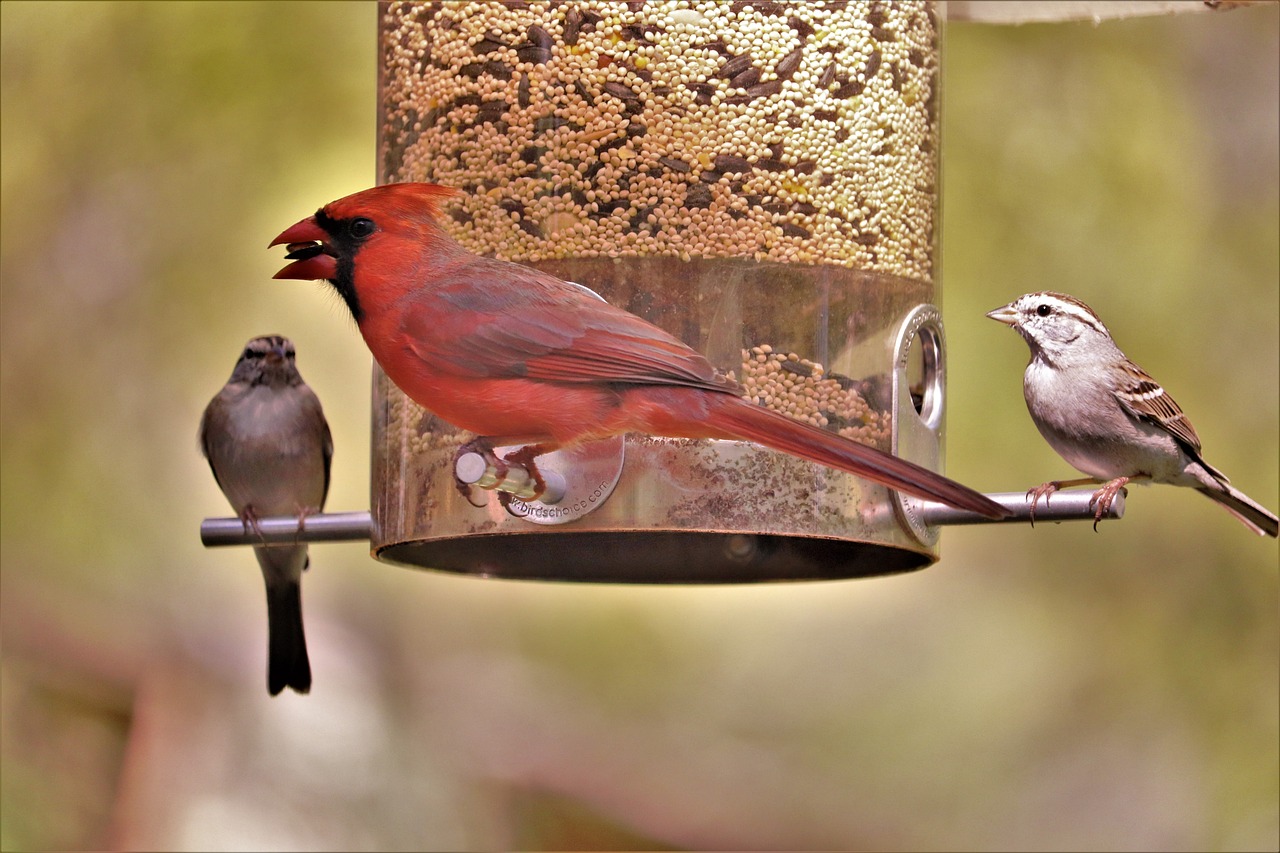
Plastic Bottle Feeders
Plastic bottles are not just waste; they can be transformed into creative and functional bird feeders that will attract a variety of beautiful birds to your backyard. The beauty of using plastic bottles lies in their versatility and ease of use. With just a few simple steps, you can turn a discarded bottle into a delightful feeding station for your feathered friends. Imagine watching colorful birds flock to your yard, all while knowing you’ve done your part to help the environment by recycling!
To get started, you’ll need to gather a few materials. The beauty of this project is that you likely already have everything you need at home. Here’s a quick rundown of what you might require:
- A clean, empty plastic bottle (1-2 liters works best)
- Scissors or a utility knife
- Twine or wire for hanging
- Birdseed (your choice of seed will attract different types of birds)
- A small stick (optional, but it can serve as a perch)
Once you have your materials, the assembly process is quite straightforward. Start by rinsing out the plastic bottle to ensure it’s clean. Next, using scissors or a utility knife, cut a few openings in the bottle. These should be large enough for birds to access the seeds but not so large that the seeds spill out uncontrollably. A good rule of thumb is to make two or three holes about 1-2 inches wide, spaced evenly around the bottle.
After creating the holes, fill the bottle with birdseed, leaving a little space at the top. If you want to add a perch for the birds, you can push a small stick through the bottle just below the holes. This will give them a comfortable spot to land while they enjoy their meal. Once your bottle is filled and, if desired, the perch is in place, it’s time to seal it up. You can replace the cap on the bottle or leave it off entirely, depending on how you plan to hang it.
Now comes the fun part: hanging your new bird feeder! Use twine or wire to create a loop at the top of the bottle and find a suitable spot in your yard. Ideally, this should be somewhere visible from your window, so you can enjoy the show. Make sure to hang it securely on a tree branch or a hook, keeping it out of reach from predators like cats.
In conclusion, making a plastic bottle bird feeder is not only an easy and enjoyable project, but it also provides a crucial food source for birds in your area. Plus, it’s a fantastic way to engage with nature and teach children about the environment. So, why not give it a try? You might just find yourself becoming a birdwatching enthusiast!
Here are some common questions people have about plastic bottle feeders:
- How often should I refill the bird feeder? It depends on the number of birds visiting, but generally, refilling it every few days is a good practice.
- What type of birdseed should I use? Different birds are attracted to different seeds. A general mix is great, but you can also choose seeds based on the specific birds in your area.
- Can I use any type of plastic bottle? Yes, most plastic bottles work well, but larger bottles tend to hold more seed and attract more birds.
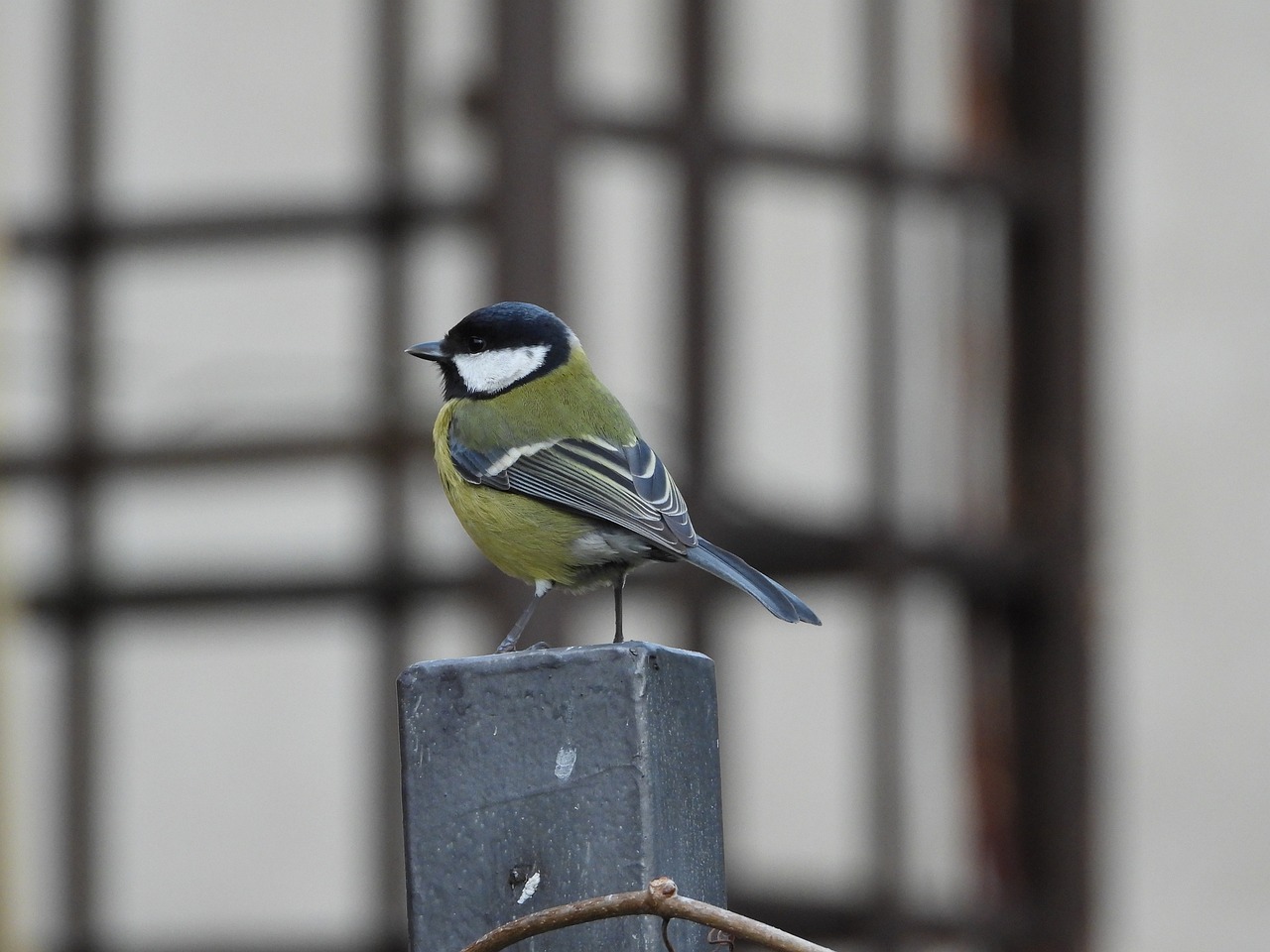
Materials Needed
Creating a bird feeder from a plastic bottle is not only a fun project, but it also requires just a few common materials that you likely already have lying around your home. To get started, you'll need:
- 1 empty plastic bottle (a 1-liter soda bottle works well)
- 2 wooden dowels or sturdy sticks (these will serve as perches for the birds)
- Birdseed (choose a mix that attracts the types of birds you want to see)
- Scissors or a craft knife (to cut openings in the bottle)
- String or twine (for hanging your feeder)
- A marker (to mark where you’ll cut the holes)
- Optional: Paint or decorations (to personalize your feeder)
Once you have gathered these materials, you’re ready to unleash your creativity! The plastic bottle serves as the main body of the feeder, while the wooden dowels will provide a resting place for your feathered friends. Birdseed will fill the feeder, attracting a variety of birds to your garden. Using scissors or a craft knife, you’ll create openings for the seed to flow out, and the string will allow you to hang your masterpiece from a tree branch or hook. Don’t forget to add your personal touch with paint or decorations if you desire!
This project not only helps you recycle but also gives you a front-row seat to the beauty of nature as birds flock to your feeder. It's a wonderful way to engage with the environment and enjoy the simple pleasures of birdwatching while knowing you’ve done your part for the planet.
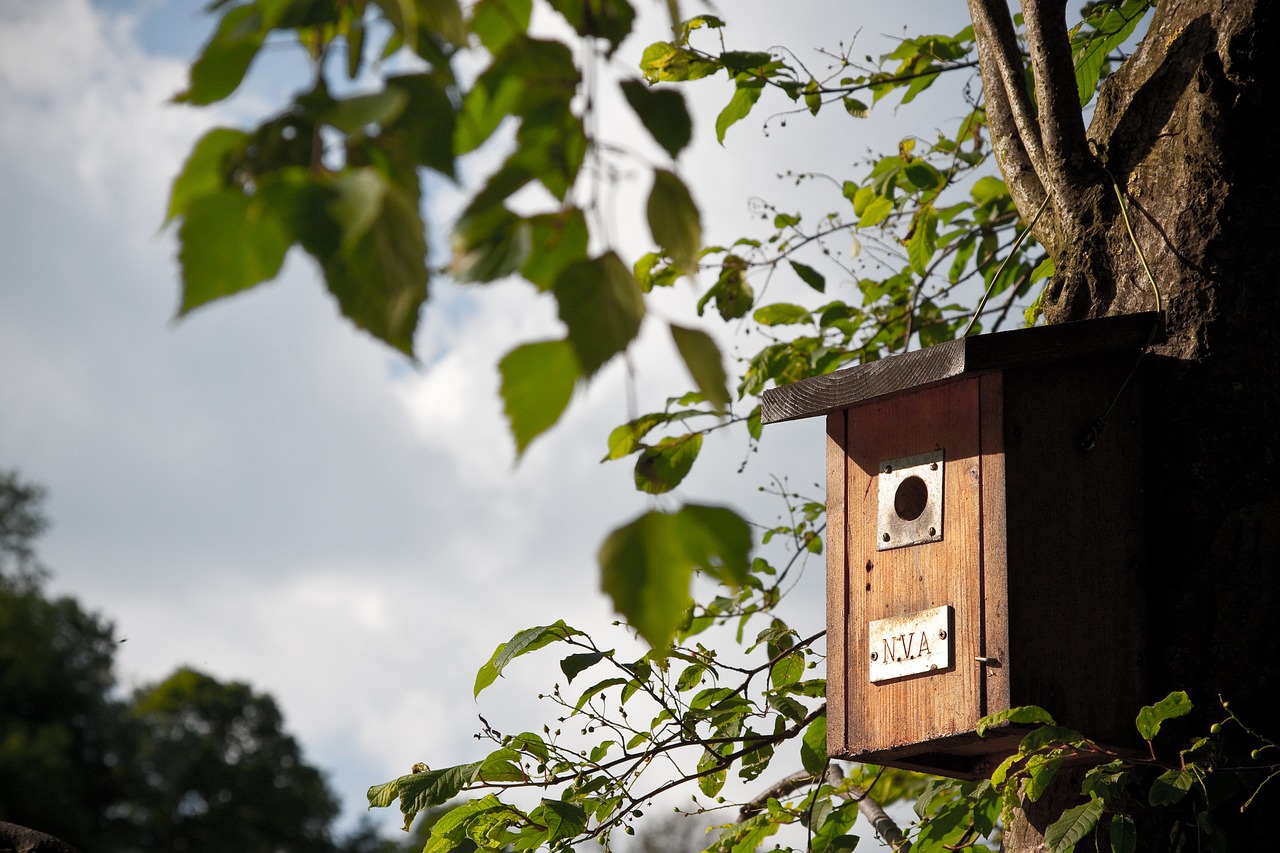
Assembly Instructions
Creating a bird feeder from a plastic bottle is not only a fun project but also a rewarding way to observe nature up close. To get started, you'll need to follow a few straightforward steps that will transform your ordinary plastic bottle into a delightful haven for birds. First, make sure you have all your materials ready. You’ll need a clean plastic bottle, a pair of scissors, some birdseed, and optionally, a few pieces of twine or string for hanging.
Begin by taking your plastic bottle and removing any labels. This step is crucial as it helps the birds identify the feeder more easily. Next, use the scissors to cut a few small holes in the sides of the bottle, about halfway up. These holes should be just large enough for birds to access the seeds but small enough to keep the seeds from spilling out too easily. You might want to create two or three holes on each side for better access.
After making the holes, fill the bottom of the bottle with birdseed. You can use a funnel if you have one, or simply pour it in carefully. Once filled, it’s time to secure the feeder. If you want to hang it, use the twine to create a loop around the neck of the bottle. Make sure it’s tied tightly so it won’t slip off when you hang it up. Alternatively, you can place the feeder on a flat surface like a table or a fence post.
Finally, choose a suitable location to hang or place your feeder. Ideally, you want it to be visible from your window so you can enjoy watching the birds as they come to visit. Make sure it’s also placed away from potential predators, like cats. And there you have it! Your very own plastic bottle bird feeder is ready to welcome feathered friends into your backyard.
Q: What types of birds will visit my feeder?
A: The types of birds that visit your feeder can vary based on your location and the type of seeds you use. Common visitors include finches, sparrows, and chickadees. Experiment with different seeds to attract a variety of species!
Q: How often should I refill the bird feeder?
A: It's best to check your feeder every few days, especially during peak feeding times in spring and summer. Refill it as needed to ensure your feathered friends always have access to food.
Q: How can I keep my bird feeder clean?
A: Regular cleaning is essential to prevent mold and disease. Rinse your feeder with warm, soapy water every couple of weeks and let it dry thoroughly before refilling it with seeds.
Q: Can I use any type of plastic bottle?
A: Yes, most plastic bottles can be used, but it's best to avoid those that previously contained chemicals or harmful substances. A standard soda bottle works perfectly!
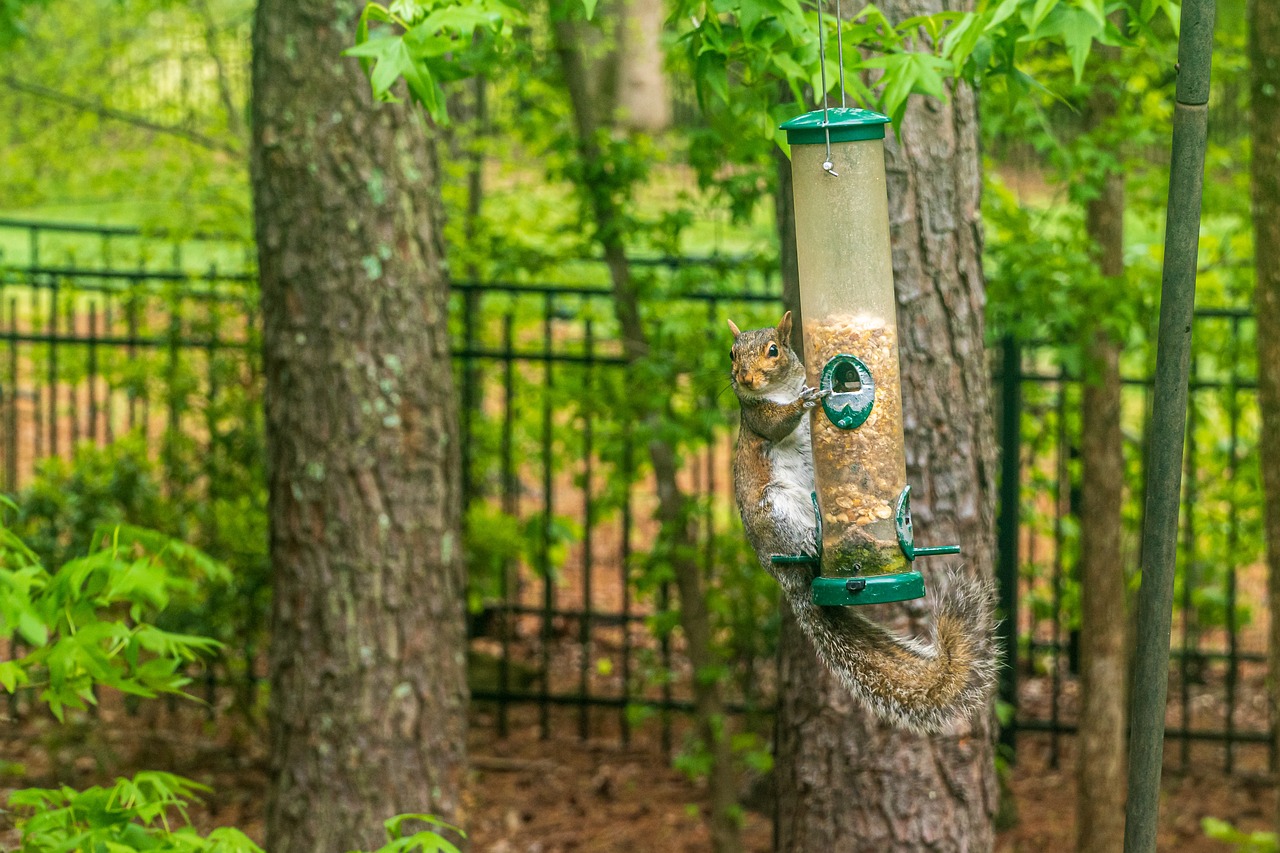
Tin Can Feeders
Tin cans are not just for soup and vegetables; they can also be transformed into charming bird feeders that will attract a variety of feathered friends to your backyard. The best part? They are incredibly easy to make and require minimal tools and materials. By repurposing tin cans, you not only reduce waste but also create a functional and aesthetically pleasing addition to your garden. Imagine the joy of watching colorful birds flit around your yard, all while knowing you made their feeding station from something that would have otherwise ended up in the trash!
To get started, you'll want to gather a few essential materials. First, make sure you have a clean tin can—think of those old coffee or food cans that are often tossed aside. You'll also need a sturdy wire or string to hang the feeder, and of course, birdseed to fill it up! If you’re feeling crafty, you can even decorate the can with paint or natural twine to give it a more rustic look. The beauty of tin can feeders is that they can be as simple or as elaborate as you want them to be.
Here’s a quick overview of the assembly process for your tin can feeder:
- Start by removing the label from the can and cleaning it thoroughly.
- Using a can opener, carefully create a few small holes in the bottom of the can for drainage. This is essential to prevent the seeds from getting soggy when it rains.
- Next, make a couple of holes on the sides of the can, about halfway up, to insert perches. You can use small twigs or dowels as perches where birds can rest while they eat.
- Once you have all your holes, thread the wire through the top of the can to create a hanging loop.
- Finally, fill the can with birdseed and hang it in a location that is visible to you but safe from predators.
One of the most delightful aspects of tin can feeders is the ability to personalize them. You can paint them in bright colors, or wrap them in twine for a more natural look. The options are endless! Plus, they can be placed in various locations around your garden, allowing you to create a mini bird sanctuary. Just imagine sipping your morning coffee while watching the birds enjoy their meal—it’s a simple pleasure that brings so much joy.
To ensure your tin can feeder remains a welcoming spot for birds, it’s essential to keep it clean. Regularly check for old seeds and debris, and rinse the can with warm soapy water to prevent mold or bacteria growth. By maintaining your feeder, you’ll help ensure that your feathered friends stay healthy and happy.
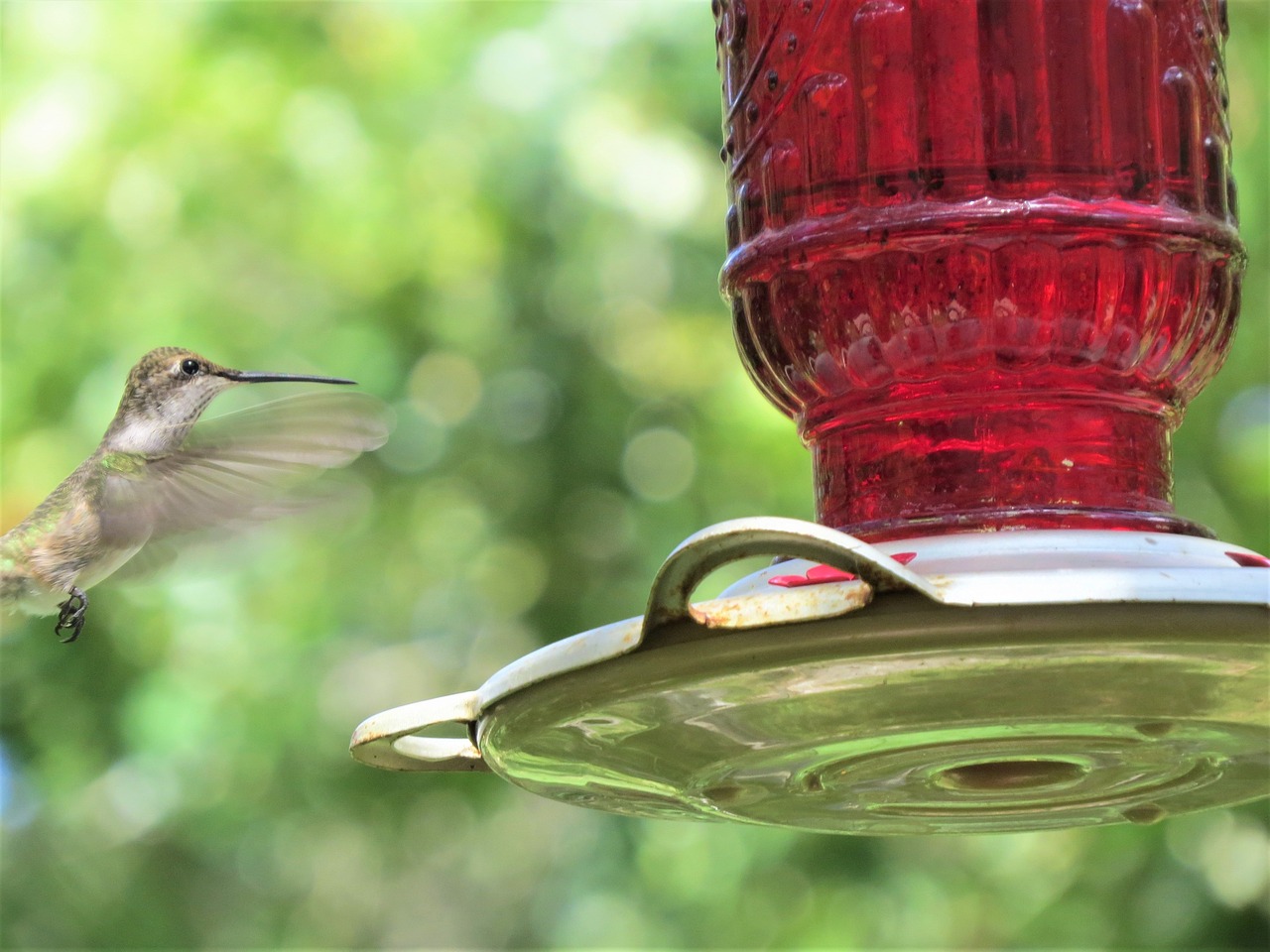
Wooden Crate Feeders
Wooden crates are not just for storage; they can also be transformed into stunning and functional bird feeders that add a touch of rustic charm to your garden. Imagine a cozy little spot where your feathered friends can gather, feast, and show off their vibrant colors! Crafting a bird feeder from a wooden crate not only recycles materials but also enhances your outdoor space. Plus, it provides a stable and spacious area for a variety of bird species to visit. It’s like throwing a party for the birds right in your backyard!
When considering how to build a wooden crate feeder, think about the design and functionality. You want to create a space that is inviting for birds while also being visually appealing for you. One popular approach is to use an old wooden crate as the base. You can leave it as is for a rustic look or paint it in vibrant colors to attract more attention, both from birds and from your neighbors. The beauty of wooden crates is in their versatility; you can stack them, hang them, or even mount them on a post. The choice is yours!
Here’s a simple idea: you could create a multi-level feeder by stacking two or three crates on top of each other. This design not only maximizes space but also allows for different types of seeds to be offered at various heights. You’ll be amazed at how many birds will flock to a well-designed wooden crate feeder. To make it even more enticing, consider adding a small roof or an awning to protect the seeds from rain and keep them dry.
To get those creative juices flowing, here are some design ideas for your wooden crate feeders:
- Hanging Crate Feeder: Suspend your crate from a sturdy tree branch or a hook. This will keep it safe from ground predators and give birds a comfortable place to feed.
- Wall-Mounted Feeder: Attach a crate to a fence or wall, creating a permanent feeding station that’s easy to refill and maintain.
- Stacked Crate Feeder: As mentioned earlier, stack crates for a multi-level feeding experience. You can even add small planters on top for flowers or herbs!
Regardless of the design you choose, ensure that the feeder has drainage holes. This will prevent water from accumulating and spoiling the seeds. Additionally, consider placing some perches or small branches around the feeder to give the birds a place to land comfortably. It’s all about creating a welcoming environment!
Keeping your wooden crate feeder in top shape is essential for the health of your avian visitors. Regular maintenance will not only prolong the life of your feeder but also ensure that it remains a safe haven for birds. Here are some tips:
- Clean Regularly: Remove any old seeds, debris, or bird droppings at least once a month. A clean feeder helps prevent the spread of diseases among birds.
- Check for Damage: Examine your feeder for any signs of wear and tear. Replace any rotting wood or loose parts to keep it sturdy.
- Refill Seeds: Keep an eye on seed levels and refill as necessary. Birds can be picky, so offering a variety of seeds can attract more species.
In conclusion, wooden crate feeders are a fantastic way to recycle materials while providing nourishment for birds. They can be customized to fit your style and the needs of your feathered friends. So, roll up your sleeves, grab that old crate, and start crafting a beautiful bird feeder that will bring joy to both you and the birds!
Q: What types of birds can I attract with wooden crate feeders?
A: Wooden crate feeders can attract a variety of birds, including finches, sparrows, and even larger birds like cardinals. The type of seeds you offer will also influence which birds visit.
Q: How do I keep squirrels away from my bird feeder?
A: Consider placing your feeder on a pole with a squirrel guard or hanging it from a branch that is too high for squirrels to jump. Additionally, using seeds that squirrels dislike, like safflower seeds, can help.
Q: Can I use treated wood for my bird feeder?
A: It’s best to avoid using treated wood, as the chemicals can be harmful to birds. Opt for untreated wood or recycled crates for a safer option.
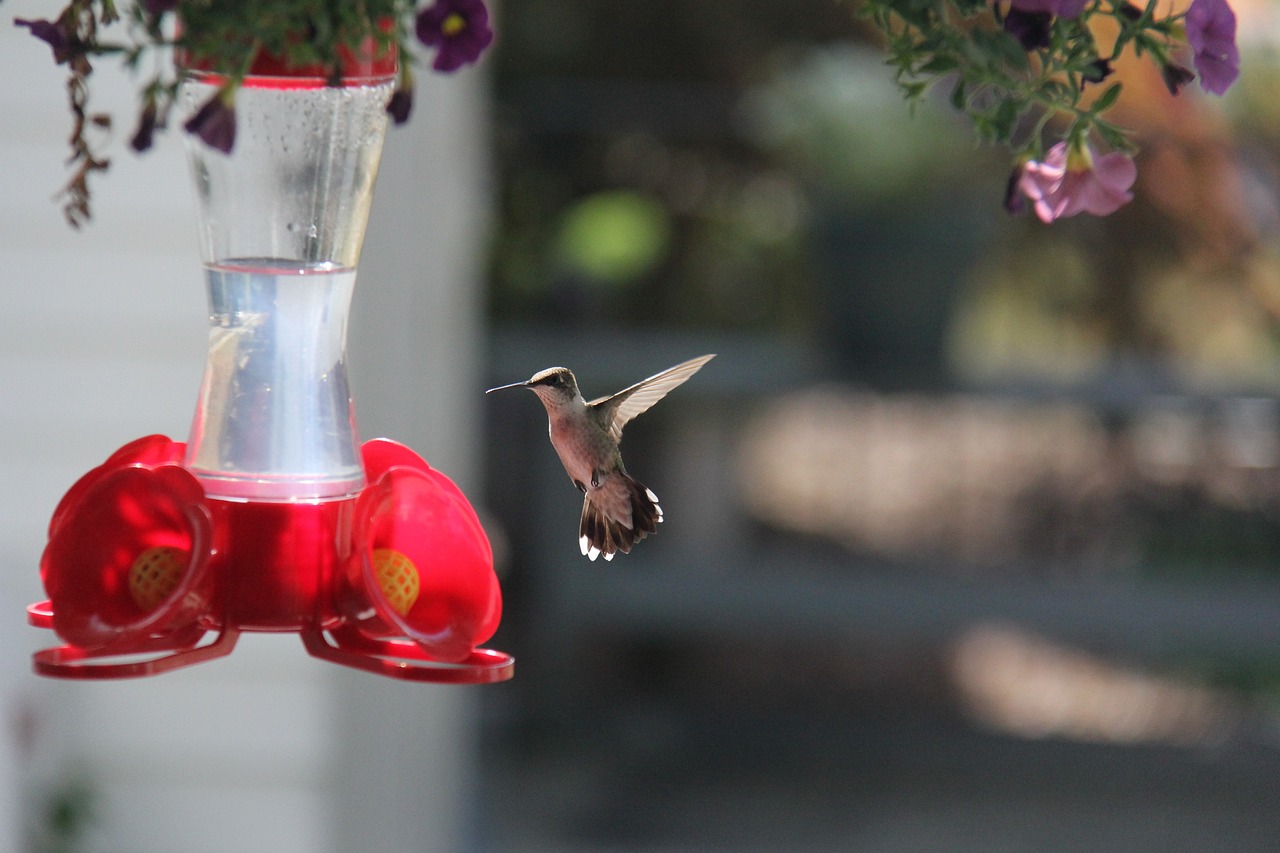
Design Ideas
When it comes to creating bird feeders from wooden crates, the possibilities are as vast as the sky itself! Not only do these feeders provide a cozy dining spot for our feathered friends, but they also add a charming rustic touch to your garden. Imagine a quaint little wooden crate hanging from a tree branch, filled with seeds, as birds flit around, chirping joyfully. It's a scene straight out of a storybook!
One fantastic design idea is to create a multi-level bird feeder. By stacking two or three wooden crates on top of each other, you can create multiple feeding stations. This design not only maximizes space but also attracts various bird species that prefer different feeding heights. You can paint the crates in vibrant colors or leave them natural for a more organic look. Just think of the visual delight it would bring to your backyard!
Another creative approach is to transform a wooden crate into a hanging feeder. Simply attach sturdy ropes or chains to the corners of the crate and suspend it from a tree branch or a sturdy hook. This design not only saves ground space but also allows you to position the feeder at the perfect height for easy birdwatching. Plus, it adds a whimsical touch to your garden decor!
For those who enjoy a bit of DIY challenge, consider adding decorative elements to your wooden crate feeder. You can use wood-burning tools to carve designs or quotes into the wood, or even attach small birdhouses or decorative stones around the feeder. These personal touches will make your feeder unique and inviting for birds and humans alike!
Don’t forget about the practicality of your design. Ensure that the crates have drainage holes at the bottom to prevent water from accumulating, which can spoil the seeds. And remember, the feeder should be easy to refill and clean. An open-top design allows for quick access, making maintenance a breeze!
To help visualize your design ideas, here’s a simple table comparing different styles of wooden crate feeders:
| Design Style | Description | Best For |
|---|---|---|
| Multi-Level Feeder | Stacked crates for multiple feeding levels | Attracting various bird species |
| Hanging Feeder | Suspended from a branch or hook | Space-saving and whimsical decor |
| Decorative Feeder | Personalized with carvings and embellishments | Unique garden aesthetics |
With these design ideas, your wooden crate bird feeders will not only serve a functional purpose but also become a beautiful focal point in your garden. So, gather your materials, let your creativity soar, and watch as your backyard transforms into a vibrant haven for birds!
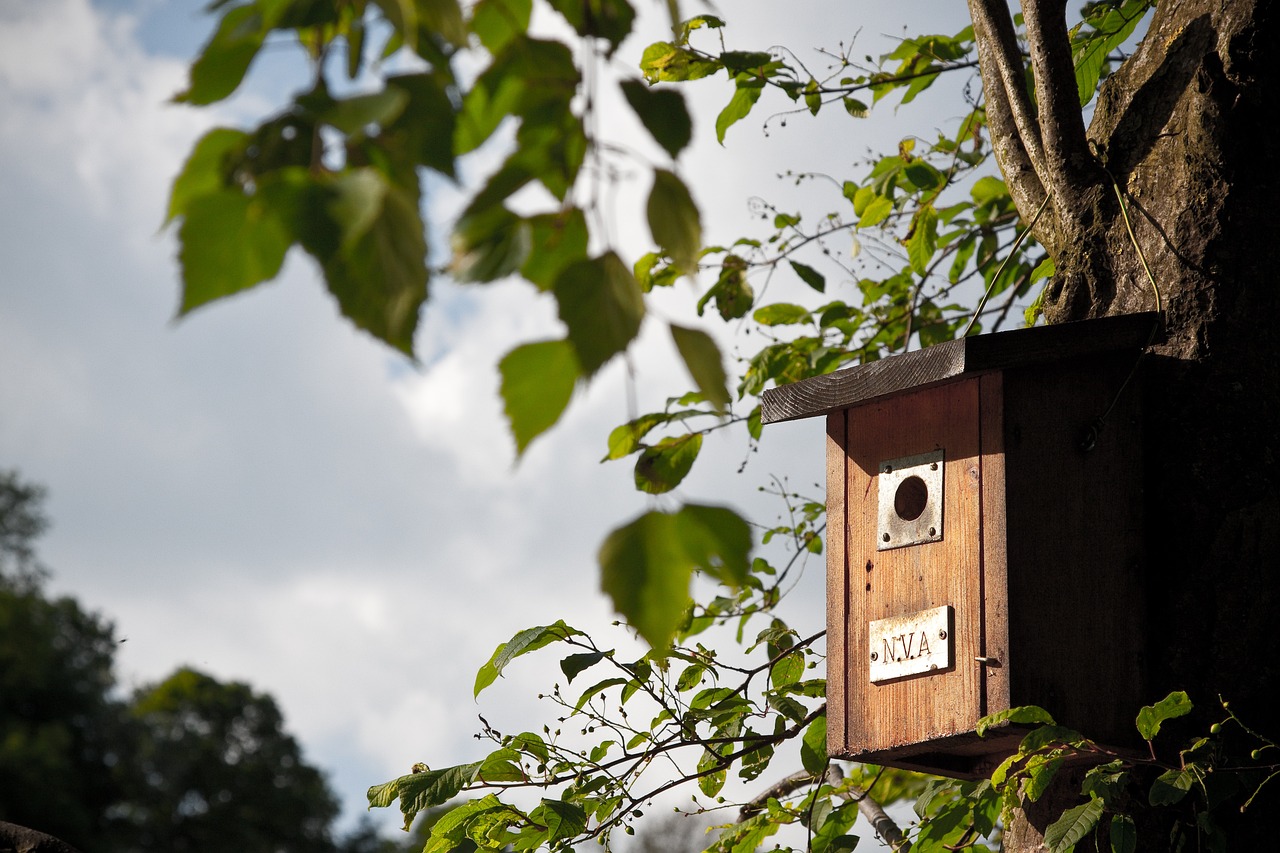
Maintenance Tips
Keeping your bird feeders clean is not just a matter of aesthetics; it’s crucial for the health and safety of the birds that visit. A well-maintained feeder can prevent the spread of diseases among birds and ensure that they have a safe place to eat. Here are some essential maintenance tips to keep in mind:
First and foremost, clean your feeders regularly. Ideally, you should clean them every two weeks, but during warmer months, when bacteria can thrive, consider doing it weekly. Use a mixture of warm water and mild soap to scrub the feeder thoroughly. Rinse well to ensure no soap residue remains, as this can be harmful to birds. If you notice any mold or mildew, a diluted bleach solution (1 part bleach to 9 parts water) can be used, but make sure to rinse it thoroughly afterward.
Another important aspect is to check the seed regularly. Stale or wet seeds can lead to mold growth, which is detrimental to birds. If you notice that the seeds are clumped together or have a foul smell, it’s time to replace them. Additionally, keep an eye on the feeder’s structure; if it’s damaged or deteriorating, it might need repairs or replacement to ensure it remains safe for use.
Consider the location of your feeders as well. Placing them in a shaded area can help keep seeds dry and reduce the growth of mold. However, ensure they are still visible to birds and away from potential predators. You might also want to rotate the placement of your feeders periodically to avoid creating a feeding ground for pests.
Finally, remember to provide fresh water alongside your feeders. Birds need water for drinking and bathing, and a shallow dish or birdbath can attract them to your garden even more. Be sure to clean the water source regularly as well, replacing it with fresh water to keep your feathered friends happy and healthy.
Here are some common questions regarding bird feeder maintenance:
- How often should I clean my bird feeder? - Aim to clean your feeder every two weeks, or weekly during warmer months.
- What should I use to clean my bird feeder? - A mixture of warm water and mild soap works well. For tough mold, use a diluted bleach solution.
- Can I use any type of seed in my feeders? - It's best to use seeds that are appropriate for the bird species you wish to attract. Sunflower seeds and nyjer seeds are popular choices.
- What if I notice pests around my feeder? - If you see pests, clean the feeder thoroughly and consider relocating it. You can also use baffles to deter squirrels and other animals.
Frequently Asked Questions
- What materials can I use to make bird feeders?
You can use a variety of recycled materials to create bird feeders, including plastic bottles, tin cans, old wooden crates, and even cardboard. The key is to ensure that the materials are safe for birds and can hold birdseed securely.
- Are homemade bird feeders safe for birds?
Absolutely! As long as you use non-toxic materials and ensure there are no sharp edges or harmful substances, homemade bird feeders can be very safe. Just be sure to clean them regularly to prevent any mold or bacteria that could harm the birds.
- How often should I refill my bird feeders?
It depends on the number of birds visiting and the type of feed you’re using. Generally, you should check your feeders every few days and refill them as needed, especially during peak feeding times like early morning and late afternoon.
- Can I use any type of birdseed in my feeders?
Most bird species enjoy a variety of seeds, but it’s best to use seeds that are suitable for the birds in your area. Common options include sunflower seeds, millet, and safflower. Avoid using old or moldy seeds, as they can be harmful to birds.
- What is the best location for my bird feeder?
Place your bird feeder in a quiet, sheltered area where birds feel safe. Ideally, it should be near trees or shrubs for cover, but not too close to windows to prevent collisions. A spot that gets some morning sun can also attract more birds.
- How can I make my bird feeder more attractive to birds?
To attract more birds, consider adding different types of feeders with various seeds, providing water sources, and keeping your feeders clean. You can also add colorful decorations or plants nearby to create a welcoming environment.
- What should I do if I notice sick birds at my feeder?
If you see sick birds, it's important to remove the feeder immediately and clean it thoroughly. Monitor the situation and consider contacting a local wildlife expert for advice on how to handle sick birds and prevent the spread of disease.



















